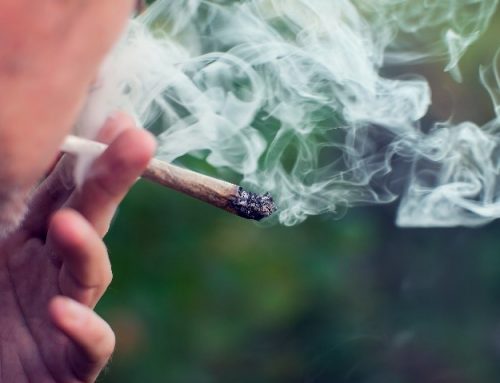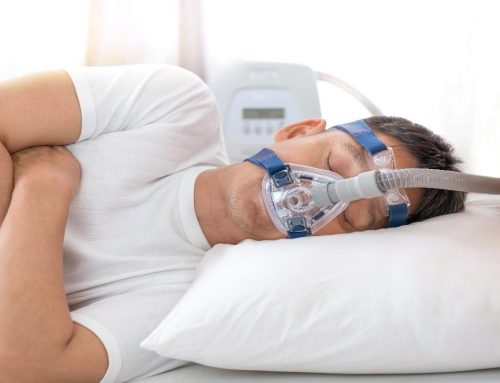What Could be Living in Your CPAP Machine?
Being told you have sleep apnea can be upsetting, being told you have to live with a CPAP machine for possibly the rest of your life is disheartening, but learning about the strict regiment needed to maintain the device can turn people off completely. Though it can be annoying there is a good reason for this; doctors are trying to keep you healthy. A CPAP machine is a piece of durable medical equipment, and like a lot of medical equipment, it needs to be sterilized and maintained, this is because certain things can grow inside the machine if it is not correctly kept clean. If you do not clean the device correctly and the organisms are allowed to grow, it can lead to complications and new medical issues.
What Can Live in Your Machine? Can it Affect Your Health?
 If you have a humidifier for your CPAP machine, it is considered a damp indoor environment, in which bacteria, dust mites, airborne chemicals, gases, particulate matter, fungus, yeast, and mold can grow. Breathing in mold, yeast, or bacteria can lead to inflammation and irritation of your airways. You could also possibly develop asthma, or come down with an infection like bronchitis, pneumonia, or inflammation of the lungs called pneumonitis. Allergic conditions caused by mold are more severe, such as mold-induced asthma, allergic fungal sinusitis , allergy bronchopulmonary aspergillosis, and hypersensitivity pneumonia. Other health issues can include sensitivities to mold exposure: Eye irritation, difficulty breathing, throat irritation, coughing, and headache. Fungal infections can also occur, that spread throughout the body that occur in people with weakened immune systems. Those affected by fungal infections are typically treated at the hospital with particular antifungal drugs and other measures to support recuperation.
If you have a humidifier for your CPAP machine, it is considered a damp indoor environment, in which bacteria, dust mites, airborne chemicals, gases, particulate matter, fungus, yeast, and mold can grow. Breathing in mold, yeast, or bacteria can lead to inflammation and irritation of your airways. You could also possibly develop asthma, or come down with an infection like bronchitis, pneumonia, or inflammation of the lungs called pneumonitis. Allergic conditions caused by mold are more severe, such as mold-induced asthma, allergic fungal sinusitis , allergy bronchopulmonary aspergillosis, and hypersensitivity pneumonia. Other health issues can include sensitivities to mold exposure: Eye irritation, difficulty breathing, throat irritation, coughing, and headache. Fungal infections can also occur, that spread throughout the body that occur in people with weakened immune systems. Those affected by fungal infections are typically treated at the hospital with particular antifungal drugs and other measures to support recuperation.
CPAP Cleaning and Sanitizing
When it comes to cleaning and sterilizing a CPAP machine those are two different things, and as such must be cleaned two different ways and sometimes more often than others depending on the piece of equipment. For instance, the humidification chamber needs to be cleaned out daily to prevent bacteria build-up as well as calcification using warm soapy water and allowing it to air dry.
 Then, once a week the humidifier chamber should be sterilized, usually, be being soaked in a solution of 1 part vinegar three parts water for approximately 30 minutes before rinsing thoroughly with distilled water. Some humidifier chambers are dishwasher safe, but make sure to check your CPAP machine’s manual before cleaning in a dishwasher. You should replace humidifier chambers every six months or as needed. You should also empty the water chamber daily to prevent bacterial growth. When cleaning or filling the humidifier, distilled water should always be used, as tap water can leave hard white mineral deposits in the chamber. Mineral deposits can make it hard for your equipment to function but can also lead to mold growth.
Then, once a week the humidifier chamber should be sterilized, usually, be being soaked in a solution of 1 part vinegar three parts water for approximately 30 minutes before rinsing thoroughly with distilled water. Some humidifier chambers are dishwasher safe, but make sure to check your CPAP machine’s manual before cleaning in a dishwasher. You should replace humidifier chambers every six months or as needed. You should also empty the water chamber daily to prevent bacterial growth. When cleaning or filling the humidifier, distilled water should always be used, as tap water can leave hard white mineral deposits in the chamber. Mineral deposits can make it hard for your equipment to function but can also lead to mold growth.
Leaving water in the device after a night of use is also a bad idea, the heated liquid can be a breeding ground for bacteria and mold. The longer the water goes unchanged, the more opportunities for mold and bacteria to grow and breed. Using a heated humidifier and heated tubing to reduce condensation will help keep moisture down in machinery
The face mask also needs to be washed daily with warm soapy water, as well as the weekly sterilizing in the vinegar solution. If you need to clean the headrest or chin strap, you should do it by hand in warm soapy water and let it air dry. CPAP tubing should be washed weekly in a sink of warm, soapy water, rinsed well, and left to hang-dry out of direct sunlight. Manufacturers recommend that the tubing is cleaned daily only if using a heated humidifier and there is water in the hose. If there is no issue with water in the tube, then it can be cleaned weakly. You may also want to wash or soak your equipment with dishwashing liquid to get the vinegar scent off of them.
The grey non-disposable CPAP filters should be cleaned on at least a weekly basis by rinsing with water and air dry. After six months or when it starts to look worn, the white, paper, disposable filters should be replaced. The white, paper, disposable filters should be changed monthly or when it starts to look dirty as needed.
Leaving water in the device after a night of use is also a bad idea, the heated liquid can be a breeding ground for bacteria and mold. The longer the water goes unchanged, the more opportunities for mold and bacteria to grow and breed. Using a heated humidifier and heated tubing to reduce condensation will help keep moisture down in machinery.
CPAP Cleaning Devices
 Another option that has recently started on the market are CPAP sterilization machines. There are a few brands: SoClean, Lumin, and VirtuClean on the market right now.
Another option that has recently started on the market are CPAP sterilization machines. There are a few brands: SoClean, Lumin, and VirtuClean on the market right now.
All of them can sterilize all of the different parts of the equipment. SoClean and VirtuClean both sterilize using O-zone while Lumin uses UV technology. These devices are useful for those who don’t have a ton of time to dedicate to cleaning their equipment. Sanitizing is not the same as cleaning the parts, you should still wash your pieces as recommended. But it helps keep the growth of dangerous organisms in the machine minimal to prevent any health issues.
It may seem like a pain to maintain, clean, and sterilize a CPAP machine. But it is a piece of medical equipment used to keep you breathing and healthy, and as such, it should be treated and maintained like the medical equipment it is. Thankfully as science improves, the machine can become smaller, more comfortable, and easier to clean and maintain.




 Shop
Shop



